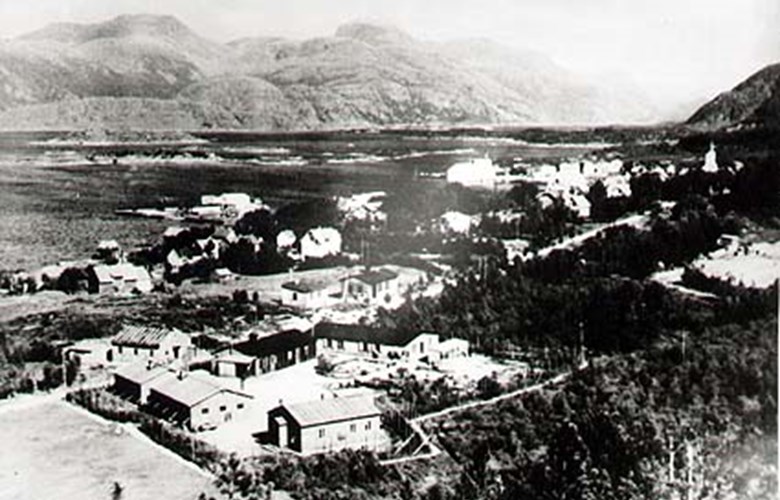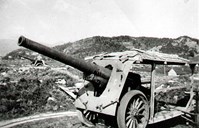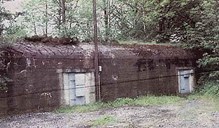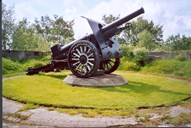The activities at Florølandet
There were a number of detachments with various tasks who came to Florø and established themselves at different places at Florølandet. In the harbour area there was a harbour master who controlled the shipping traffic. In the area around the Florø Primary School a small barracks camp was established for an engineer corps detachment and an office for the construction management. At Storåsen there was an active unit of infantry soldiers, whereas at the top of Storåsen hill there was an observation post for Luftwaffe. At Sørstrand in the southern part of Florølandet there was a small coastal fort with two 75mm field guns, whereas the Germans established the biggest military facility at the point of Havreneset. We cannot be sure as to the exact number of German soldiers who were stationed at Florølandet at that time, but in the summer of 1943, the number of soldiers must have been around 500.
The coastal fort at Havreneset
At the point of Havreneset people had to leave their farms, and the Germans started the construction of gun positions, barracks, bunkers, tunnels and facilities inside the mountain. The purpose of building the coastal fort was to establish a battery that could hit targets in the shipping lane. In 1942, a battery with six big 155mm guns came to Florø. A huge concrete bunker was built to be used as command headquarters, and under this a mountain facility was blasted. Walls and roof were covered with tiles, there were stoves and air ventilation systems, and the entrances were secured with armoured doors. Close by there was another facility with two mountain halls under construction, but this work was not completed. In June 1945, the Norwegian Coastal Artillery took over the coastal fort, and in the autumn of 1945, it was shut down.
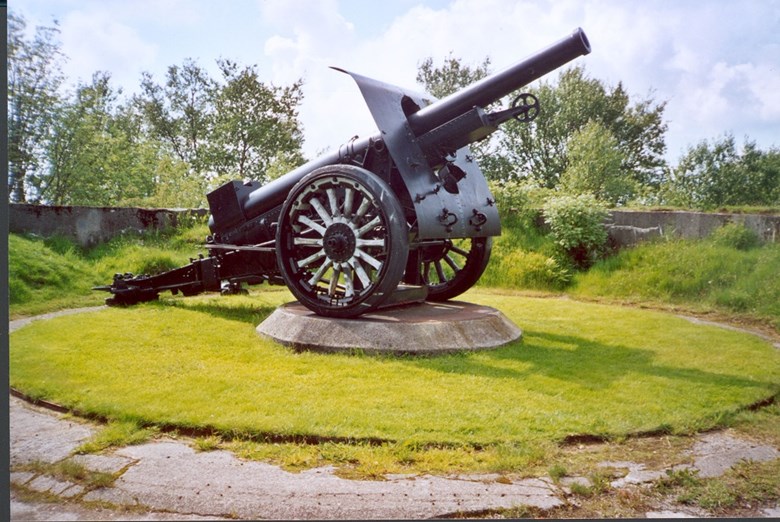
Facts and figures on the Havreneset coastal fort:
German name of the fort: HKB 5./981 Floröy Troops : 127 officers and crew Artillery : 6 French 155mm field guns Operational : Summer of 1942
Russian prisoners' camp
At the Havrenesveg road the Germans built a prison camp for Russian POWs, and the prisoners were put to work on building the fortifications at Florølandet. There could be as many as 120 prisoners in the camp, and most of the heavy work at Havreneset was carried out by the prisoners of war.
Shortly after the war, the camp was used for a while as an internment camp for Norwegian members of the Nazi-friendly party "Nasjonal Samling" (National Unity). On 1 September 1945, 10 prisoners and a Norwegian guard were called out to assist with the dumping of ammunition. The barge exploded and a total of 20 men lost their lives in this accident.
War memorial walks
The municipality of Flora has made it possible to visit some of the war memorials. Storåsen is a leisure area with many fine paths and roads. Walking from the Havrenesvegen road up to Storåsen, you can find traces of barracks and bunkers. Many places there are systems of trenches, firing positions for infantry weapons, as well as trenches where soldiers took cover. Havreneset is a residential area, and it is less suitable for visits. However, two guns remain, and one gun was cleaned and painted in 1995.
In May 1994, a memorial plaque was placed at Florahallen where the Russian prisoners camp was located.

